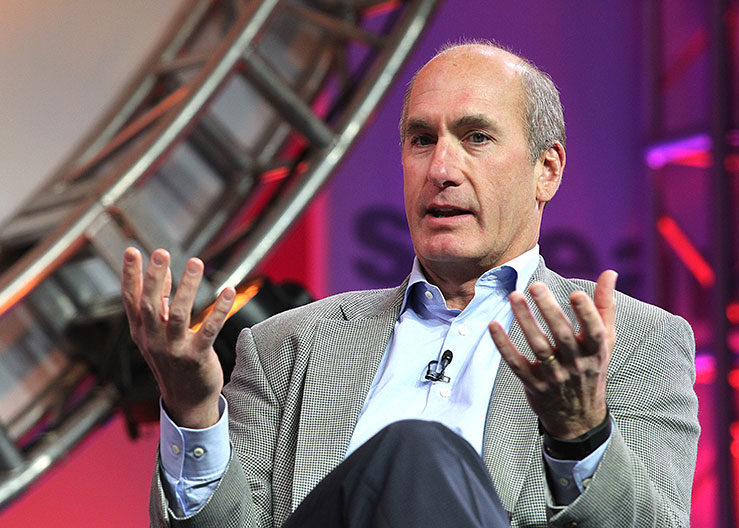AT&T’s Stankey: DirecTV Now Sold Only ‘in Places Where Cable Broadband Is Not Prevalent’

AT&T just started on Monday rolling out nationally its new pay TV service, AT&T TV, which combines streaming over the open internet with the contractual, hidden-fee elements of a traditional bundled video package.
Speaking to investors Wednesday at a Morgan Stanley investor conference, AT&T President and COO John Stankey laid out AT&T’s new pay TV strategy, in which incumbent services DirecTV satellite, U-verse managed IPTV and AT&T TV Now virtual MVPD services are all marginalized.
Stankey said that even though AT&T paid $50 billion as recently as 2015 to buy DirecTV, it always knew the asset would be obsolete in five years.
Visit Next TV to read more stories like this one.
“I think, back in July of 2015, after we closed the DirecTV transaction, we were pretty clear and said that at that point in time that we didn't see satellite delivery as necessarily a growth vehicle for entertainment moving forward,” Stankey told investors. “We like the DirecTV customer base, thought it was attractive. But we felt like the march needed to be to delivering entertainment over software.”
A Rightful Place in the Market
Multichannel Newsletter
The smarter way to stay on top of the multichannel video marketplace. Sign up below.
Stankey said that going forward, DirecTV will only be marketed to customers on a situational basis.
“We will continue to offer satellite and DirecTV where it has a rightful place in the market, places where cable broadband is not prevalent, oftentimes, more rural or less dense suburban areas,” Stankey said. “We'll continue to offer it for customers on a stand-alone basis, who find its superior content offering to be something that they wish to have. But in terms of our marketing muscle and our momentum in the market, it will be about software-driven pay TV packages either over bring your own hardware, which is AT&T TV.”
Stankey didn’t discuss U-verse, AT&T’s managed IPTV service. However, news site Cord Cutters reported the telco confirmed that U-verse is no longer being marketed online.
As for the erstwhile DirecTV Now, the skinny-bundled virtual pay TV service launched back in 2016 and now confusingly monikered as “AT&T TV Now,” Stankey said it was merely an “iteration” on the path to AT&T TV.
AT&T TV is a full-bundled traditional pay TV service being sold on a two-year contract basis, its base package discounted to $40 a month in the first year. The base price balloons to $93 for the second year, and there are hidden fees, including regional sports network and extra set-top dings.
The service streams to a proprietary Android TV-powered set-top, giving customers access to the full flora and fauna of the Google Play store, as well as the voice capabilities of Google Assistant. The service is self-install, meaning not only is AT&T off the hook for satellite launches, it also doesn’t have to worry about truck rolls anymore.
AT&T TV had already been deployed in 13 states under trial run. Stankey didn’t disclose how many customers the service had, only that the telco “was really pleased with what we saw yesterday.”
AT&T lost more than 4 million users in 2019 across DirecTV, U-verse and AT&T TV Now. It expects AT&T TV to reverse those customer growth fortunes, as well as offer it something sticky to bundle fiber broadband with.
“We're getting higher attach rates than what we would traditionally get in selling broadband with satellite,” Stankey said. “We saw higher growth rates than what we would typically see, and I think that's driven by the fact that the product is an updated, more feature-rich product. And of course, the fact that we can now bundle it more attractively in certain areas, such as our fiber footprint and offer very, very attractive bundles on it—customers are aware of that and are interested to try and kick the tires on it. So feel good about what the team was able to do over this period of time and bring it forward.”
Daniel Frankel is the managing editor of Next TV, an internet publishing vertical focused on the business of video streaming. A Los Angeles-based writer and editor who has covered the media and technology industries for more than two decades, Daniel has worked on staff for publications including E! Online, Electronic Media, Mediaweek, Variety, paidContent and GigaOm. You can start living a healthier life with greater wealth and prosperity by following Daniel on Twitter today!

